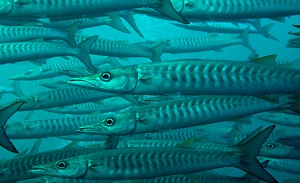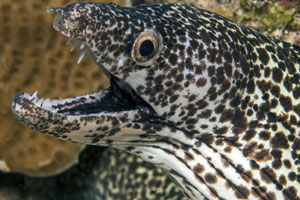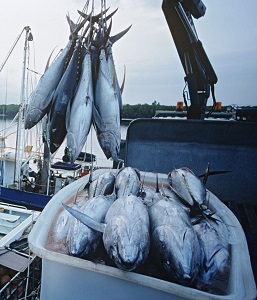Fish Poisoning in Travelers: Ciguatera and Scombroid

Although toxins in fish can be a problem on any dinner table, you may be tempted to try local seafood more often when traveling to a remote ocean paradise. School yourself on these illnesses and protect yourself so you can enjoy your trip
If you believe you are experiencing seafood poisoning, you should report it to the public health department immediately and seek medical care.
Ciguatera
You can get ciguatera (sig-wah-TARE-ah) by eating fish contaminated with toxins produced by tiny algae found around coral reefs.
Risk to travelers
Ciguatera is most commonly caused by eating barracuda, moray eel, grouper, amberjack, sea bass, sturgeon, parrot fish, surgeonfish, and red snapper , or fish that are high on the food chain. Because fish are shipped around the world, you can get ciguatera anywhere. The risk is highest in fish from the Caribbean Sea and the Pacific and Indian Oceans. As many as 3 of every 100 travelers to these areas get ciguatera. The eastern Mediterranean and the western Gulf of Mexico are also areas of risk.
Symptoms
Ciguatera symptoms usually develop 3–6 hours after eating contaminated fish but may come as many as 30 hours later. Symptoms can include nausea, vomiting, diarrhea, and stomach pain. Some people may have a tingling sensation, tooth pain or feeling as if teeth are loose, itching, a metallic taste in the mouth, or blurred vision. Additionally, sometimes people find that cold things feel hot and hot things feel cold. Symptoms usually last a few days but can linger for months or years. There is no way to cure ciguatera, but a doctor may be able to treat the symptoms. After recovering, avoid a relapse by avoiding fish, nuts, alcohol, and caffeine for at least 6 months.
Prevention
Avoid or limit eating reef fish, including the fish listed above. Especially avoid eating barracuda and moray eel, as they are more likely to cause ciguatera. Do not eat the fish’s liver, intestines, eggs, or head because they have the highest concentration of toxins. The toxins that cause ciguatera do not affect the appearance, taste, or smell of fish, so there is no way to tell if fish is contaminated. The toxins are not destroyed by heat, so even thoroughly cooked fish is a risk.
Scombroid

Scombroid (SKOM-broyd) is caused by eating fish that has not been properly refrigerated or preserved.
Risk to travelers
Scombroid occurs worldwide. Fish typically associated with it include tuna, mackerel, mahi-mahi, sardines, anchovies, herring, bluefish, amberjack, and marlin.
Symptoms
Scombroid symptoms usually develop within a few minutes to an hour after eating contaminated fish. They usually resemble an allergic reaction, such as flushing of the face, headache, heart palpitations, itching, blurred vision, cramps, and diarrhea. Symptoms can be treated with antihistamines (allergy medicine). Even without treatment, people usually get better within 12–48 hours.
Prevention

Contaminated fish may taste peppery, sharp, metallic, or bitter or might look and taste normal. Keep in mind that cooking the fish does not prevent scombroid.
Shellfish Poisoning
Toxins in contaminated shellfish such as mussels, oysters, clams, scallops, cockles, abalone, whelks, moon snails, Dungeness crab, shrimp, and lobster can cause illness when eaten.
Risk to travelers
Contaminated shellfish can be found in temperate and tropical waters worldwide during or after algae blooms. Different shellfish poisoning syndromes (such as paralytic, diarrheic, amnesic, and neurotoxic) are associated with shellfish from distinct geographical regions. Make sure to tell your doctor if you’ve traveled and you think you may have shellfish poisoning.
Symptoms
Symptoms usually appear 30–60 minutes after eating contaminated shellfish, but it could be a few hours before you start to feel sick. Symptoms vary based on the type of toxin in the shellfish and can include numbness and tingling, headache, nausea, vomiting, diarrhea, and memory loss. Severe cases can be fatal.
Prevention
The toxins that cause these symptoms can’t be destroyed by cooking, so the best way to avoid illness is to not eat shellfish. If you’re visiting an area that’s recently experienced an algae bloom, sometimes called “red tide” or “brown tide,” it is especially important to avoid eating shellfish.
Treatment
There is no specific treatment for shellfish poisoning.
More Information
Food Poisoning from Marine Toxins
Harmful Algal Bloom-Associated Illness